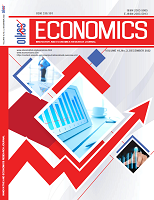Digital Workplace Transformation: Innovative Approach after Covid-19 Pandemic
Digital Workplace Transformation: Innovative Approach after Covid-19 Pandemic
Author(s): Ljubiša Mićić, Zoran MastiloSubject(s): Business Economy / Management, Health and medicine and law, Present Times (2010 - today), Human Resources in Economy, ICT Information and Communications Technologies
Published by: Oikos institut-Istraživački centar Bijeljina
Keywords: digital transformation; digital workplace; COVID-19; change management; human resources;
Summary/Abstract: COVID-19 had undoubtedly speeded up adoption of digital technologies. Most of the theoreticians agree that changes that happened in the pandemic period would not happen in the next several years or even decades. There is almost no business operation that has not been affected by the pandemic, from customer relation and sales to supply chain. It influenced different business sectors leaving permanent change and making a significant proportion of organizations working in at least hybrid mode: combining digital and traditional pre-pandemic ways of working. COVID-19 had significantly changed the workplace and way of working. Workplace has shifted to digital or at least hybrid and employees and companies have adopted new ways of working, including usage of digital technologies but also accepting more agile and flexible procedures and rules. The research community has followed this phenomenon and tried to provide best possible recommendation to it accordance to recognized research methods. The paper provides a systematic literature review of the most significant scientific and industry publication in the years after the pandemic start. It is based on Kitchenham methodology of the systematic review with selected publication from recognized bibliographic databases. First part provides general effects of the pandemic to digital transformation of businesses all over the globe, mostly connected to analysis of the employees’ workplace preference. The second part is focused on digital workplace transformation and presents key theoretical and professional findings in the post-pandemic workplace. This part is consisted of the preview of benefits of the digital workplace transformation, identification of critical success factors and the most significant challenges of the process.
Journal: ECONOMICS-INNOVATIVE AND ECONOMICS RESEARCH JOURNAL
- Issue Year: 10/2022
- Issue No: 2
- Page Range: 63-76
- Page Count: 14
- Language: English

